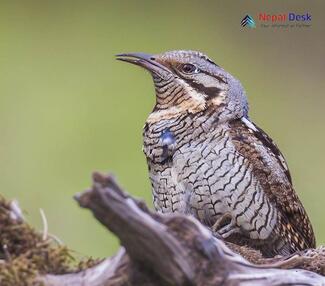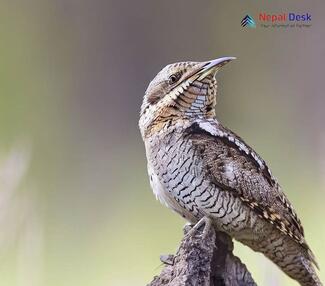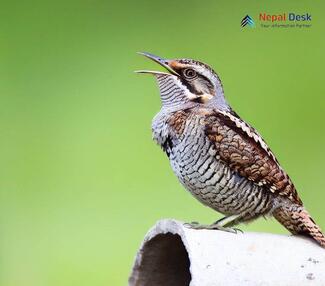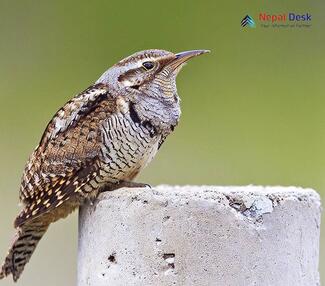Nepal, a country known for its rich biodiversity, is a paradise for bird lovers, providing a habitat for over 900 different bird species. Among these incredible creatures, the Eurasian Wryneck (Jynx torquilla) stands out as an elusive and enigmatic species. Also called Northern Wryneck, it is a species of wryneck in the woodpecker family. When disturbed at the nest, they twist their head like a snake and hisses as a threat display. This odd behaviour led to their use in witchcraft, hence putting a "jinx" on someone. In this article, we will delve into the mysterious world of the Eurasian Wryneck and explore why this fascinating bird has captured the hearts of many Nepalese bird enthusiasts.
The Distinctive Features of the Eurasian Wryneck
The Eurasian Wryneck, a member of the woodpecker family (Picidae), is a small and cryptically colored bird that measures approximately 16-18 cm in length. Its plumage is dominated by shades of brown, gray, and black, which helps it blend into its surroundings seamlessly. The most striking feature of this curious creature is its extraordinarily flexible neck. The name "wryneck" originates from the peculiar twisting motion they make when alarmed or threatened. This unique defense mechanism not only deters predators but also adds to their enigmatic allure.
Habitat and Distribution in Nepal
The Eurasian Wryneck is predominantly found in Europe and Asia but migrates to regions like Nepal during winter. Their preferred habitats include open woodlands interspersed with grasslands, parks, and gardens with trees and bushes close to water bodies. In Nepal, these birds have been spotted in various locations such as Chitwan National Park, Bardia National Park, Pokhara Valley, and surrounding areas or even in urban green spaces like Kathmandu Valley.
Mating and Breeding Behaviour
The Eurasian Wryneck's breeding season occurs from April to August. They are cavity nesters, typically laying their eggs in tree holes, abandoned woodpecker nests, or even man-made nest boxes. The female Wryneck lays 5 to 10 white eggs, which she incubates for approximately twelve days. After hatching, both parents feed the chicks and care for them until they are ready to fledge, typically within 20-24 days.
Conservation Status and Threats
The Eurasian Wryneck is classified as a species of "Least Concern" on the International Union for Conservation of Nature (IUCN) Red List due to its widespread range and stable population trends. However, the destruction of suitable habitats and the use of pesticides may result in local population declines. As such, it is essential for bird lovers and conservationists to work together and promote efforts to preserve natural habitats to ensure the survival of these fascinating birds in Nepal.
In conclusion, the Eurasian Wryneck is a unique bird species that adds to the allure of Nepal's rich avian biodiversity. Encountering this enigmatic bird in the wild is undoubtedly a memorable experience for any avid birdwatcher. So grab your binoculars and embark on an exciting birdwatching adventure into the breathtaking landscapes of Nepal – who knows, you might just catch a glimpse of the elusive Eurasian Wryneck!




